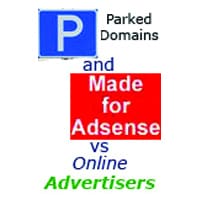Creating content for online advertising can feel a bit like appealing to an expressionless and mute monarch. Advertisers tend to have a good understanding of text optimization signals like keyword frequency and active voice usage, but optimizing video presents additional complexities: are platforms like YouTube crawling the audio for clarity and keyword content? How does Facebook know what users to send to your videos?
At the end of August, Meta helpfully published an article describing four ranking signals they use for video and giving advice on optimizing for those signals. These affect Reels, Stories, and Live and On Demand videos, so if you’re thinking of running videos on Facebook for conversions, brand awareness, or any other reason, read on.
Originality
Duplicate content isn’t good for engagement, and Meta wants each video to be as unique as possible to ensure their users aren’t bored. Avoid homogeneity by publishing videos you’ve produced or at least meaningfully enhancing content that isn’t original.
Retention
Your videos should be engaging, high quality, and thoughtfully paced. The more gradual the decline in your audience retention graph (meaning fewer viewers are disinterestedly swiping past after a few seconds), the greater priority your video will receive from Meta.
Facebook has added an auto-generate captioning tool to engage users watching without sound; an easy way to increase accessibility. They also suggest capturing your audience’s attention with a narrative structure (build-up, tension, pacing, and payoff) and ensuring your video is no longer than it needs to be to improve retention.
Intent
Do you have an audience who regularly returns to your content? This is a powerful signal you can encourage by creatively & methodically planning campaigns of videos with different purposes: short-form reels to quickly blast out fun content as well as longer-form storytelling to engage returning viewers and build your brand’s message.
Engagement
Meta wants to see viewers interacting with your videos. Authentic reactions, likes, shares, and comments (especially discussions between viewers) are great indicators that your audience is engaged with your content.
In their article, Meta rather abruptly changes the tone here to emphasize that tactics like clickbaiting and compensating other accounts to share content will result in reduced distribution or, in repeat cases, loss of monetization for your videos, so beware.
Monetization
Speaking of which, you might not know you can monetize your Facebook videos with in-stream ads, provided you meet Meta’s many eligibility requirements (which would require another blog post to delineate in full). If you choose to do so, you’ll have to consider a number of other factors (like creating natural breaks in your videos for ads). If you’re a business advertising on Facebook and not an influencer or creative account, we don’t suggest running ads on your ads.
Hopefully, these tips reduce some of the confusion of video advertising. If the process still seems daunting, get in touch for a free consultation and we’ll help you do it right.



